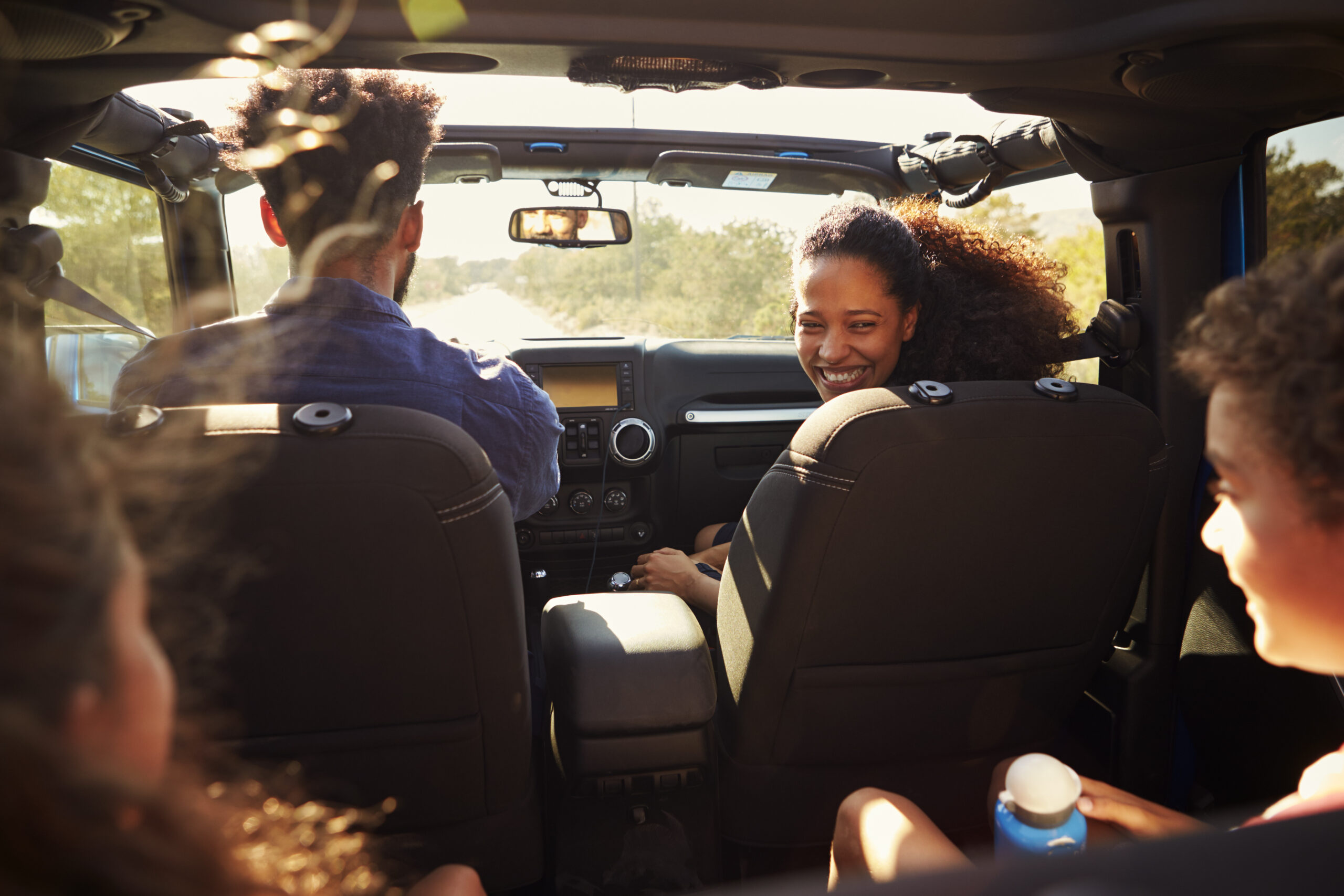Safe driving tips for the summer
Updated June 28, 2024 | Published June 29, 2022
-
Categories:
- For Drivers
- Safe Driving
- Summer

Summer travel is heating up. In 2023, AAA reported that nearly 51 million people were traveling during the Fourth of July weekend, making this upcoming weekend one of the busiest traveling times of the year. The majority of travelers – 43 million – travelled by car. Here’s some simple safe driving tips to help keep your family safer while traveling by car this Fourth of July.
Prepare to hit the road
Build an emergency kit
Being prepared with an emergency kit can help you in a variety of situations that may arise, from accidents to mechanical problems. Here’s some suggestions for what to include:
- Rain protection (rain coats, umbrellas, etc.)
- Toilet paper
- Basic first aid kit
- Flashlights with fresh batteries
- Warning flares or triangles
- Shop rags or paper towels
- Basic hand tools, including a screwdriver, hammer, etc.
- Battery or solar powered phone chargers
Prevent issues before they begin with regular car maintenance
Regular maintenance checks can help ensure your car is in good working order. Here are some things to look for:
- Check your tire pressure and tread depth
- Make sure your flat tire replacement and jack are in the car and ready to be used if needed
- Check that your wiper blades are in good condition
- Make sure your car battery is working and does not need to be replaced
- Fill your windshield washer fluid
For an extensive overview of car maintenance that should be performed on a regular basis, head over to our article.
Time your travel
Last year AAA forecasted that drivers should expect the longest delays heading into the holiday weekend, especially during the afternoons on Thursday, June 29 and Friday, July 30. This year, expect similar delays, with Friday afternoon, Saturday, and Sunday to be likely candidates for the busiest travelling days, so that families can take full advantage of the extra-long weekend. Check resources like Google Maps before heading out to estimate current traffic levels or find alternate routes.
Practice safe driving
Buckle up!
The WebFirst Insurance team believes in buckling up first before putting your car in drive. We encourage you and your passengers to wear your seatbelt at all times. According to the National Safety Council, studies show that seat belts, when used, are 45% effective in preventing fatalities among front-seat passenger car occupants *.
Stay alert
Taking breaks from driving can help you fend off fatigue. If another licensed driver is in the car, we recommend that you switch drivers every two hours/100 miles. If you’re traveling without another driver, you should take breaks at the same intervals. Stretches and short naps can be helpful to maintain alertness.
If you’re a passenger, help the driver to focus on the road. Assisting with directions, grabbing needed items like sunglasses, or wrangling the kids in the backseat helps keep your driver’s eyes on the road and hands on the wheel.
Be mindful of trucks
Trucks are the largest type of commuter and commercial vehicle, making it crucial to be extra cautious when driving near them.
- Keep your turn signal on longer than normal so a truck driver can identify when you’d like to merge
- Make 100% sure the truck is clear of your vehicle before changing lanes
- Do not tailgate
- Do not cut off anyone, especially trucks
Prevent car theft
Help lower your risk of falling victim to car theft this Fourth of July with these simple steps:
- Keep valuables stashed away in the glove box or trunk
- Take pit stops in shifts so the car is not left unattended
- Empty the car completely when you’re finished driving
- Double check that nothing valuable is left behind or is in sight
What to do in the event of an accident
Visit our What to do When you Get in a Car Accident? page for a full list of steps to take.
*Although the reduction in the risk of fatal injury from wearing seat belts is higher for light-truck occupants at 50%, the lower figure for passenger car occupants is used in the calculations here as the more conservative measure. The most recent data from FARS indicate that seat belt use by fatally injured passenger car and light truck occupants was 48.6%. Visit nsc.org for more information.
